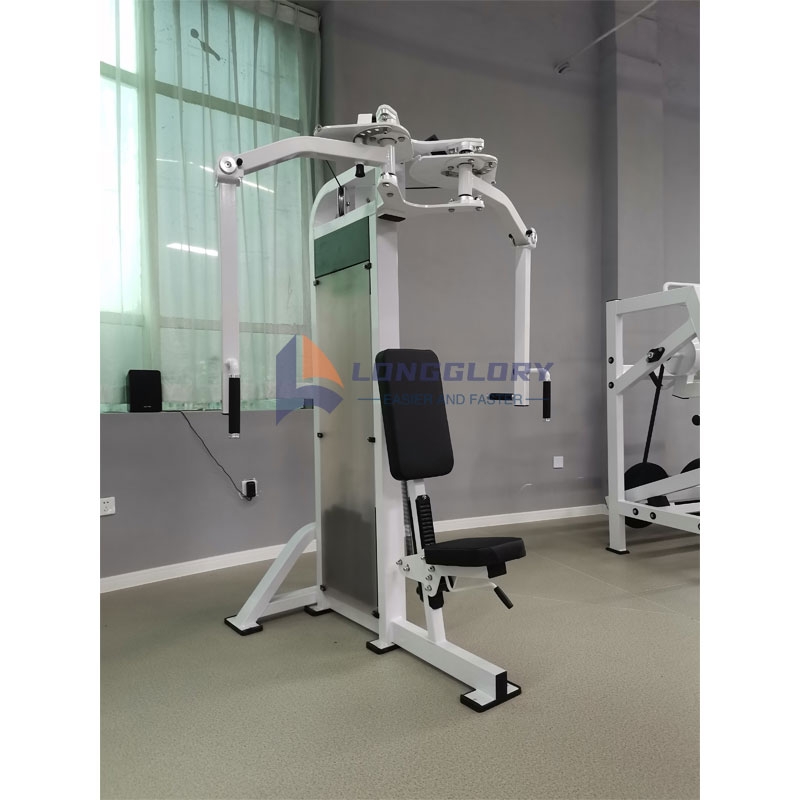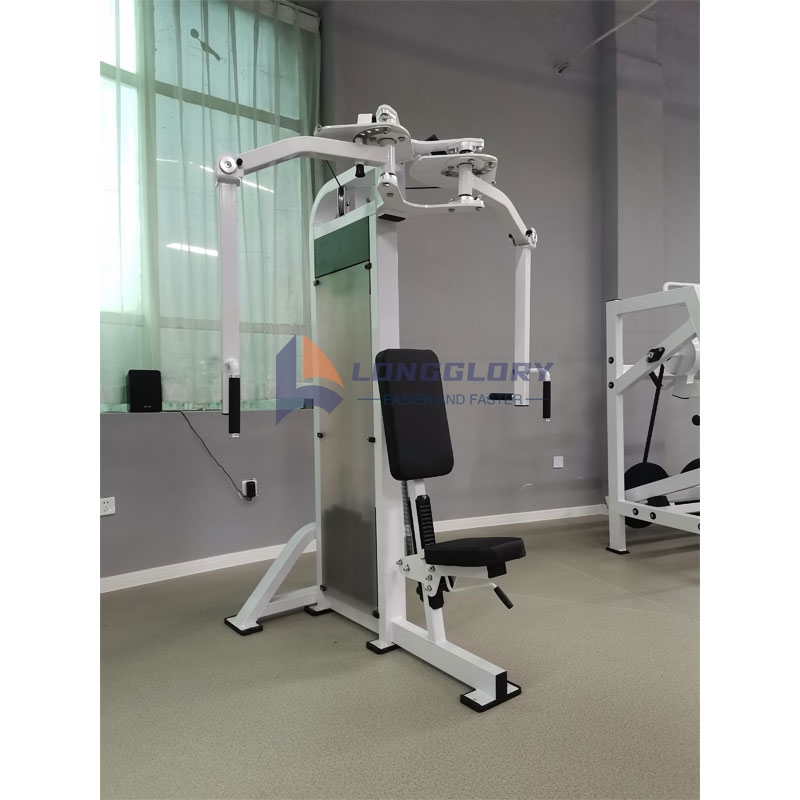- English
- Español
- Português
- русский
- Français
- 日本語
- Deutsch
- tiếng Việt
- Italiano
- Nederlands
- ภาษาไทย
- Polski
- 한국어
- Svenska
- magyar
- Malay
- বাংলা ভাষার
- Dansk
- Suomi
- हिन्दी
- Pilipino
- Türkçe
- Gaeilge
- العربية
- Indonesia
- Norsk
- تمل
- český
- ελληνικά
- український
- Javanese
- فارسی
- தமிழ்
- తెలుగు
- नेपाली
- Burmese
- български
- ລາວ
- Latine
- Қазақша
- Euskal
- Azərbaycan
- Slovenský jazyk
- Македонски
- Lietuvos
- Eesti Keel
- Română
- Slovenski
- मराठी
- Srpski језик
Training clusters and action introductions of various equipment--Chest equipment
2024-06-21

Action: Seated chest press
Muscles trained: pectoralis major, anterior deltoid, triceps
Action introduction:
1. Sit on a stool with legs apart, hold the handles of the equipment with both hands, keep your shoulders down, and tighten your abdomen at the same time.
2. Hold the handles horizontally with both hands, exhale when pushing forward, and inhale when slowly returning to the original position.

Action: Butterfly chest press
Muscles trained: chest groove separation
Action introduction:
1. Sit on the chair of the butterfly trainer, keep your upper body upright, chest up, abdomen in, and waist tight. The forearms of both hands should be tightly attached to the pads of the forearm resistance device, so that the forearms are perpendicular to the ground and the upper arms are parallel to the ground
2.Exhale when both arms are forced to press the chest in the middle at the same time, try to keep the two resistance devices close together for 2 seconds, then inhale and slowly return to the original position.

Action: Straight-arm chest press
Muscle group trained: Degree of separation of chest groove
Action introduction: Adjust the seat height so that the handle is at the same height as your shoulder. Keep your arms slightly bent. Be careful not to open your arms too much (open them to the plane of your back) to avoid hurting the shoulder joints. The weight should not be too heavy. Pause for 3 seconds when adducting to fully squeeze the pectoralis major.

Muscle group trained: Rear deltoid
Action introduction:
1. Sit on the reverse butterfly machine with your chest close to the cushion. Hold the handle tightly, and the handle should be adjusted to the same height as your shoulder. Bend your elbows slightly and prepare to pull back.
2. When pulling back, gradually tighten the rear deltoid. When you pull back to the end, slowly return to the starting point. Slowly and controlled release of the muscles can ensure that the deltoids receive continuous tension.




